Genre: Shmup Developer: Toaplan Publisher: Tengen Players: 1-2 Released: 1994
In the world of shmups, we give major respect to Toaplan for its great vertical shooter of the ’80s/’90s and for starting the manic shooter era that’s still in effect today. Batsugun is known in the shmup world as the first manic (or bullet-hell) shmup ever created (it was also Toaplan’s last shmup before it went out of business). Now before Batsugun, Toaplan was trying out different ideas to get away from the ’80s style shmups of the pass. It was aiming for more bullets on screen with a lot of enemies firing all at once. It was trying to create harder bullet patterns which were hard to dodge unless you had great reflexes. But before Batsugun, there was the prototype of the manic shooter: Grind Stormer/V-5. When playing either game we can see the direction where Toaplan was heading with its shooters. Lamentably, while Grind Stormer/V-5 was great for the arcades, the Genesis just couldn’t handle the sprite heaviness of this Toaplan shmup.
On this Genesis cartridge there are two games, with the difference between the two being purely the gameplay. V-5 is what the game is known as in Japan, while Grind Stormer is what we westerners received. When you play the game on a U.S. Genesis or European Mega Drive, Grind Stormer boots up. If you play it on a Japanese unit, V-5 boots up (it doesn’t matter if you’re using the American or Japanese cartridge). If you want to change the game just press B when you’re on the main screen, and you’ll be in options (just change the game mode). The music, graphics, and enemy placement are all the same in Grind Stormer/V-5 except for gameplay and some bullet patterns. Both games are checkpoint shooters, so get ready for a challenge. V-5 is hard and it’s for shmup experts while Grind Stormer is for casual Genesis gamers.
Grind Stormer is easier to play in general. A and C are your shot while B is your bomb. In Grind Stormer, you must destroy icon ships to change weapons or increase your fire power (by picking up the icons). The icons usually loop in the following order: speed up, shot (default weapon, don’t hold shot and you can adjust the firing range by moving up and down), missiles (firing orbs that follow you ship and fire missiles, like the orbs in Gradius), search (pods will lock on enemies until destroy), power (weapon level up), and repeats. From time to time, the loop will be interrupted when some icon ships (when destroyed) release a diamond-shaped icon. The icon is the bomb icon, and you can hold up to six bombs at a time. The bombs in Grind Stormer are only good to protect yourself, since they’re very weak and don’t cause that much damage. If you’re in trouble, it’s recommended that you use them.
V-5 in general is much harder to play and it’s more for experts in the shmup field. Since this is what the Japanese players had to deal with in the arcades, many shmup players call this the original version of the game. Say goodbye to the icon pickup system and bombs, say hello to the Gradius power up system! Like Slap Fight (another Toaplan shmup) from many years back, V-5 uses the Gradius power up system. A and C are still shot, but B is the “select” button.
The power up system works by collecting the diamond-shaped icons (used for bombs in Grind Stormer mode) and pressing B on the item you need. It goes in the following order: speed Up, shot (default), missiles, search, power, and shield (it protects you from a few hits). For example, if there’s nothing selected on the power up bar and you pick up a diamond icon, it’ll become a speed up. If you want to speed up your ship just press the B button and boom, speed up! If the power-up bar is currently on search (but you want to select power), get another diamond-shaped icon and press B. If you need shield, well you must collect a lot of icons if you want to select it!
There’s a bonus at the end of the stage if you collect the diamond-shaped icons (try to get all of them and don’t die for the no-miss bonus). In Grind Stormer the bonus point icons (a lot of them are in stage three) are worth a lot more than in V-5. So, in general, it’s harder to score in V-5 if you want to get a extra ship. Some of the bullet pattern formations are different from Grind Stormer and some enemies have one extra pattern hidden up their sleeves. In both versions, the more you power up your weapons (by using power), the faster and bigger some of the bullet pattern gets!
Grind Stormer/V-5 is known for its sprite-heavy bullet patterns and having a lot of big enemies on screen at once. If you think stage one was hard enough, then try playing stage two and beyond – tons of bullets, lasers, and more all coming at you at once! While this makes the game very fun, it brings up its biggest flaw: terrible sprite break ups (aka sprite flickering). The game has some of the worse sprite breakups I’ve ever seen in my life. In stage one when you’re fighting the bosses, the sprite break up is terrible. While this is not bad for some people, did I tell you it also causes sprite break ups on the bullets? That’s right; from time to time the bullets will break up as well causing you to not even see it! This problem is a pain the butt in stage three and beyond. The last boss has some terrible break up, and it’s almost impossible to dodge the bullets. Don’t get me wrong, the game is still very beatable, but it’s just a lot harder with the sprite problems. Adding to this is the hardware slowdown when there’s too much action. The slowdown is not as bad as Viewpoint on the Genesis (which has some terrible slowdown), it’s just annoying in certain parts of the game.
Along with the sprite break up, the graphics are not that great. When playing Grind Stormer/V-5 it’s like playing an early Genesis title. The colors are really washed out and, in some parts, look terrible. We know that sixty-four colors are not much, but if Treasure and Technosoft can make wonderful looking games with so few colors then anyone can. To be fair, the game still has enough to not look like crap, but Tengen did a terrible job with the background colors (and this was released in 1994!). I’ll give the game credit because many of the enemies are nicely animated, which is not too bad at all.
Toaplan shmups are known for their great musical scores, but Grind Stormer/V-5 has some of the weakest music compared to other Toaplan Genesis ports. Most of the music is just not great at all. Most likely they sound a lot better in the arcades, but on the Genesis, I guess Tengen didn’t try its best to make the music sound good at all. Personally, I was only able to like stage two and the last stage’s musical tracks. The sound effects are also nothing really to talk about. They aren’t annoying, but they’re not great either.
FYI, the U.S. release of Grind Stormer did have a defective print run. It seems like Tengen of America was using cheap plastic PCBs inside the cartridge, and as a result a good number of them didn’t work. If you see Grind Stormer in the wild beware, as it could be a defective copy. If you’re into imports you can hunt down the Japanese Mega Drive release V-5, but like most Japanese Tengen releases it will cost a good bit of money (around $75 complete). Unlike the U.S. release, there have been no reports of defective print runs for the Japanese run. Personally, I would go for the Japanese version because the packaging destroys the American release hands down.
After the release of Grind Stormer/V-5 in the arcades Toaplan went out and created the first manic shmup, Batsugun. Even so, Grind Stormer/V-5 is a great game in its own right, of course. By playing the Genesis port you can tell that the system just wasn’t able to handle it (or could it be terrible programming by Tengen? I don’t know since it did a great job with Slap Fight). The sprite break ups (or flickering) is what hurts the game the most. You need to see the bullets if you want to survive (and if the bullets are breaking up, then how the heck are you going to dodge?). Hardcore shmup fans are going to get a kick out of Grind Stormer/V-5 but the casual gamers may find little enjoyment from this Genesis port. If you really want to give it a shot you can try to find a working U.S. copy for cheap, but if you’re hardcore you can hunt down the Japanese release. A word of caution: the sprite break ups will make the game look ugly.
SCORE: 6 out of 10

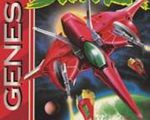
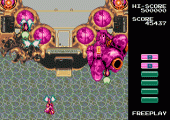
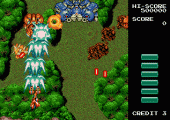
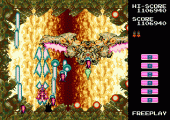
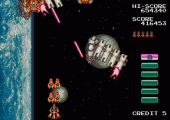
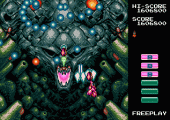
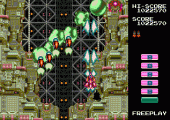
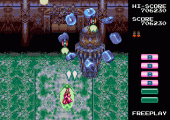
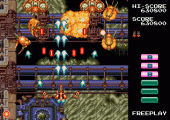
I love this game. It’s a lot of fun to play. It does have its problems though. The graphics take quite a hit from the arcade, but it still looks good taken for what it is. Considering the Genesis hardware was such a big step down from the arcade board, they did a great job recreating the Grind Stormer experience without losing too much. The game does have issues with sprite flicker. I found the worst of that seems to be in stage one for the bosses, which makes for a poor first impression. Unlike the reviewer here, I did not notice any instances of bullets going invisible. Something like that can ruin a game like this. I’m glad I gave it a chance and found out for myself.